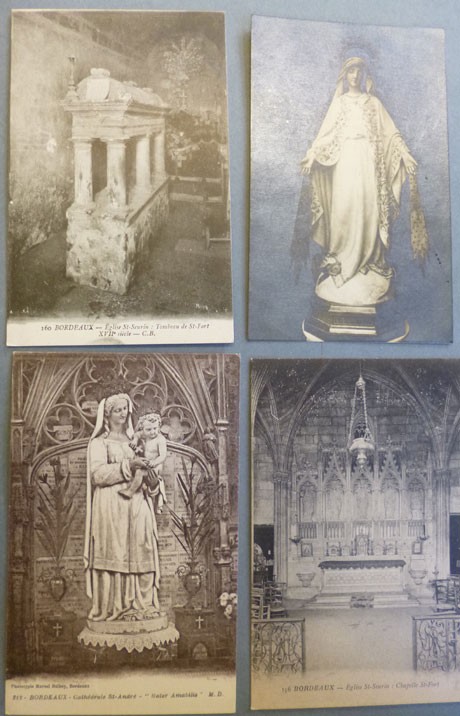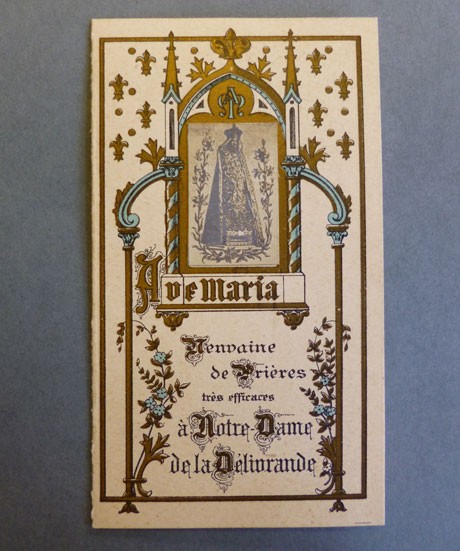By Oliver O'Hanlon, PhD Student Department of French and School of History, University College Cork.
You never know what you might come across while researching in the Manuscripts Department of the National Library of Ireland. I have already written an Irishman’s Diary in the Irish Times (14 October 2013) about how I found a lock of hair in one particular collection. It was while examining the Art Ó Bríain (O’Brien) Papers (MSS 2141, 2154-2157, 5105, 8417-8461) that I stumbled upon this unexpected piece of personal history.

A lock of Mrs McSweeney's hair (MS)
The envelope which contained the lock of hair was marked Mrs MacSwiney (MS 8447/11), and it was of course a memento of Muriel MacSwiney, the wife of the late Lord Mayor of Cork, Terence MacSwiney. Appointed as a representative of the First Dáil in England in early January 1919, Art Ó Bríain played a key role in publicising MacSwiney’s hunger strike in England and around the world, which culminated in MacSwiney’s death in Brixton Prison on 25 October 1920. The collection list of the Art Ó Bríain Papers, available from the NLI Main Catalogue at http://catalogue.nli.ie/Record/vtls000273095, was compiled by Owen McGee in 2009 and it provides researchers with a very detailed description of what is contained in the collection.
The vast majority of the material, which comprises sixty-three boxes and six volumes of material, is paper based. This includes memoranda, letters, telegrams, postcards, photographs, reports and complete copies of newspapers, as well as newspaper cuttings. There is also a small amount of unusual or unexpected items, such as the lock of hair.
Even though he was born in London, Art Ó Bríain played an important role in Irish political and cultural affairs in Ireland and among the Diaspora in England during the 1910s, 1920s and 1930s. His entry in the Dictionary of Irish Biography lists the many Irish themed organisations of which he was a member. At various times, Ó Bríain belonged to the Gaelic League, the Irish Republican Brotherhood and the Irish Volunteers. For a good number of years, he was president of Sinn Féin in England and Wales. He was also chairman of the Dáil London Loan Committee, as well as being a founding member of The Irish Self-Determination League in Great Britain.

My interest in the Ó Bríain Papers developed from an attempt to assess the propaganda role played by Ó Bríain in London in the early 1920s. During the Irish War of Independence, Ó Bríain spearheaded the push for positive Irish publicity in England and further afield. As the Dáil’s London representative, he was in touch with a large number of domestic newspaper journalists and editors. He was also in frequent communication with members of the foreign press corps who were stationed in London. This group included journalists representing newspapers in many different countries in North and South America, Europe and Australia. Ó Bríain made it his business to meet these journalists to convince them that what was being said and written by the authorities in London and Dublin Castle about events in Ireland was often exaggerated or, in many cases, just wrong.
In this role, Ó Bríain often acted as a middle man, passing information and publicity material from Dáil ministers and departments directly to journalists, to other Dáil representatives based in Europe and to interested parties all around the world. We can see from the Art Ó Bríain Papers that both during and after the Terence MacSwiney hunger strike, Ó Bríain was one of the main sources of information to the outside world as to how the hunger strike was developing. As well as issuing correspondence on the worsening health condition of the Lord Mayor, Ó Bríain also received a good deal of correspondence from members of the public in England and in other countries. This included hand written letters, Mass cards, prayers and poems. Some of the messages were in sympathy for the Lord Mayor and his family and some were hostile and called into question why it was necessary to go through this ordeal and how his family could condone it. McSwiney’s hunger strike and death prompted an outpouring of emotion, which can be sensed in the various personal responses that are gathered in this collection. It is very interesting to find this deeply personal material among what is predominantly a political collection.

Before he died in 1949, Ó Bríain sketched out some useful information for his biography (MS 8461/31), but unfortunately, neither he nor his sister ever managed to finish the project. Judging by the material that I have viewed in the Art Ó Bríain Papers, I can only say that it is a shame that his story has never been fully told.
